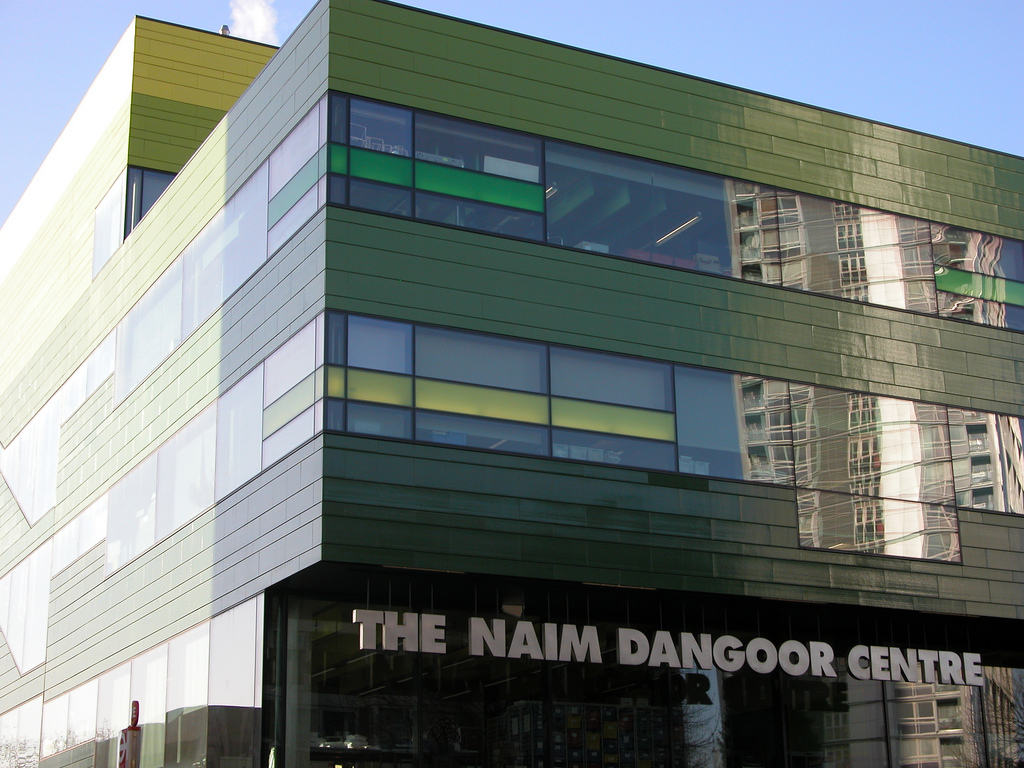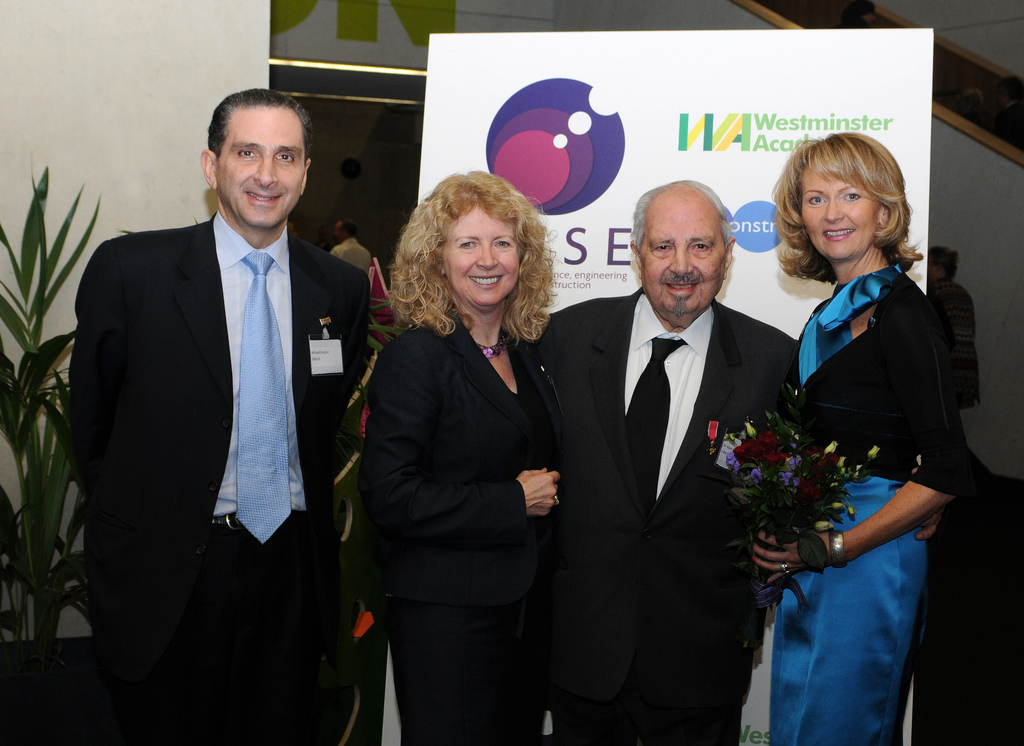The Westminster Academy: Naim Dangoor Centre Blog
Women In Science and Engineering (WISE) awards held at the Westminster Academy, Dec 08 read more...
Dangoorland: Article Published on Architectural Website about the Westminster Academy and the work of Dr Naim Dangoor read more...

Women In Science and Engineering (WISE) awards held at the Westminster Academy, Dec 08

Dr Naim Dangoor and Michael Dangoor attended the Women in Science and Engineering (WISE) Awards held in December 08 at the Westminster Academy: The Naim Dangoor Centre.
Dangoorland: Article Published on Architectural Website about the Westminster Academy and the work of Dr Naim Dangoor
Link to original article
Were you ever bullied in a toilet at school, or was it something you only saw on Grange Hill? At the Westminster Academy at the Naim Dangoor Centre, which opened last year on the Harrow Road, the toilets have been designed by architects specifically to counter bullying: individual cubicles with floor-to-ceiling partitions come off a corridor with exits at both ends, making it difficult to trap or harass another kid out of sight of teachers.
Such is the level of thought that goes into the basic fabric of an Academy School. Westminster, which took its first students last year, replacing half of the North Westminster Community School (recently celebrated by the Serpentine), is open on Open House weekend. L and K opt to be shown round by a pair of enthusiastic students, while P, who has a school to build himself, and I go for the architectural tour, led by Susan Le Good of AHMM, the architects currently shortlisted for the RIBA Stirling prize for their work on the building.
It’s quite spectacular, both inside and out. Layered in rising terracotta greens and yellows on the outside, on the inside gallery floors rise around a central atrium, with a single narrow staircase linking top floor to bottom. Many of the walls are bare concrete, both to save budget on coverings, and for its thermal properties, keeping the building at an even temperature. Sound is deadened by wood wool boards and curious little acoustic baffles hanging from the ceiling everywhere, colour-coordinated with the citrus theme. The sun coming in through the atrium’s ceiling is tempered by an array of rectangular angled boards, in fact no more than painted door blanks.
Hemmed between the Harrow Road and the Westway, the building is a self-contained box: windows don’t open, keeping noise and pollution out. Air is circulated mechanically below the raised floors. Almost everything about the building is self-consciously ‘inspirational’: emblazoned on the outside walls of classrooms are quotes from everyone from Nelson Mandela to Khalil Gibran (the Academy’s prospectus opens with a quote from Malcolm X, though it’s not the one about chickens coming home to roost). On the third floor, a window gallery hosts a semi-permanent exhibition of Naoki Honjo’s large format tilt-shift photographs of Tokyo.
The school’s curriculum and ethos is oriented around some kind of idea of global business. On one level, it seems like a totally appropriate vision for a school in which English is not the first language of 89% of the students. Transparent windows are overlaid with iconised skylines of other ‘global cities’; the back wall of the cafeteria shouts the names of a global menu, from ackee & saltfish to sushi. It’s slightly more sinister that the central atrium is known as ‘the marketplace’, and another set of windows carries a bizarre alphabetical list of financial trading terms like ‘hedge fund’ and ‘vulture capital’, as if to be uncritically learned by rote. Merits and gold stars have been replaced by Vivo Miles, a smart card identity and rewards system (the keen student guides were getting fifty apiece for their extracurricular participation). The equation of the world with world markets seems like a particularly pernicious bit of Blatcherite ideology, though Susan assures us that the kids learn the normal curriculum. I refrain from asking whether with their concentration on the global economy the kids have been upset by the credit crunch.
I also wonder (aloud), how much of the architectural thought that went into the school concentrated on the monitoring and control of students, creating an environment where nothing is unseen. It’s not just for the kids, either: there’s minimal staffroom space for the teachers, who eat and socialise with students. Another tour participant, a teacher involved in the early planning stages of the building says that on the contrary it’s all about making the students feel safe in school, a place where they haven’t always felt secure. And despite the physically and socially sealed box of the school (no leaving at lunchtime), the entrance is at least welcoming, without barriers or cardswipes. The other half of North Westminster was absorbed by the Paddington Academy. From the outside it certainly looks more like a prison than a school, and it wasn’t open for Open House.
And who is Naim Dangoor? He’s the self-proclaimed Babylonian Exilarch, ex coca-cola magnate and self-appointed leader of Iraqi jews in Britain, moved to educational philanthropy for the refuge England offered him when the pre-Saddam Ba’ath party purged Iraqi jewry. The Dangoor family stepped in to support the Academy, when the original sponsors, Chelsfield (who proposed the whole global business thing, so you can hold your stereotypes right there) dropped out.
They get a lot of bang for their sponsorship buck: Academy sponsorship involves putting up a couple of million quid, about ten percent of the capital budget, for the build itself (DCSF or whatever it’s called this week, supplies the rest in public money), and no ongoing revenue funding for maintenance, equipment teachers etc. In return, you get naming rights in perpetuity (the building is built to last fifty or more years), and the power of appointment to the school’s governing body.
The Dangoor family are members of the congregation of the Spanish and Portuguese Synagogue in Lauderdale Road, also open for Open House this weekend. It’s a Sephardi synagogue, an extension of the Bevis Marks synagogue (the oldest in England, established not long after Cromwell’s readmission of jews to England), opened in 1896 for a jewish community moving away from the East End at the same time as thousands of Ashkenazi fleeing persecution in Eastern Europe were arriving. In comparison to the more modest places of worship being established on the outskirts of the City, Lauderdale Road has an understated kind of grandeur, with a white-banded red brick exterior, brown marble columns inside and Moorish-domed ark. A cheerful man plays us choral music from iTunes on his laptop and explains the continual, social nature of a typical three-hour Saturday service at the synagogue.
I think it’ll be a while before I feel like queuing up outside the Bank of England or Lloyds of London again: sometimes just-down-the-road is the best bit of Open House.
If
you would like to make any comments or contribute to The
Scribe please contact
us.